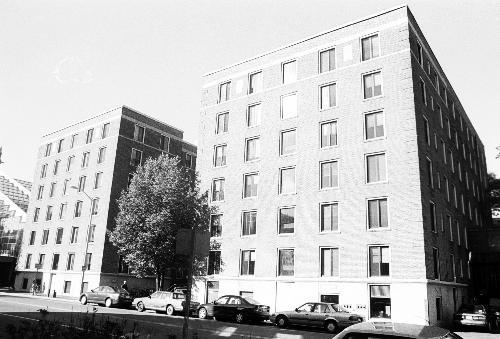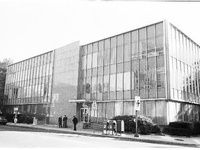Sidney R. Knafel ’52 thought he was giving a lot when he gave $15 million to fund a new Harvard center.
His gift went toward a project still known around Cambridge as the Knafel Center.
But Knafel’s name was taken off Harvard’s planned Center for Government and International Studies (CGIS) a year ago, even after he donated another $11 million, when University officials found that the project’s budget had more than tripled and realized they needed to raise millions more to pay for it.
By only giving Knafel’s name to one of the center’s two main buildings, the naming rights of the other building were freed to entice another philanthropist.
The center is the Faculty of Arts and Sciences’ most visible and important building project. If and when it is constructed, it will hold all members of the Government department as well as the Faculty from most of Harvard’s centers for international study.
Multimedia
It is also one of FAS’ most time-consuming projects. It has already caused four years of arguments, as Harvard and Cambridge residents went back and forth over the location and design of the center’s two main buildings slated for construction on Cambridge Street.
Now, the center seems to be nearing reality, with Harvard seeking to overcome what will be the final obstacle to the center’s construction: a permit from the city to tunnel under Cambridge Street and connect the center’s two buildings with an underground passageway.
Overshadowed by the extensive redesigns, though, an equally complicated process has been taking place within Harvard. The center’s budget swelled as the project shifted its location and shape, finally settling at a point three times the size of the first estimates.
Over five years, the Center for Government and International Studies went from being a $30 million project to a $100 million enterprise, leaving University fundraisers struggling to follow. Now, armed with about a third of the money and what they hope is a reasonable estimate of the pricetag, the University’s fundraisers search to make up the difference.
Big Bucks
The initial plan for CGIS would have looked something like the Barker Center, which brought together Faculty in 12 humanities departments and consisted mainly of renovating the Harvard Union at a cost of $25 million.
Under the original blueprint, Coolidge Hall would have been completely renovated and a new building would have been erected on part of the park behind the Graduate School of Design’s Gund Hall. An underground passageway across the park would have connected the two.
Until about three years ago, when the original plan was scrapped, the price tag for CGIS was cited at $30 million. But from the very beginning, officials should have known the cost would be far greater, says David A. Zewinski ’76, associate dean of the Faculty for physical resources and planning.
“The $30 million was woefully inadequate,” Zewinski says. “It probably should have been doubled from the start.”
He says that the initial estimate of the center’s cost—which had been the basis for naming CGIS after Sidney Knafel—was a vague “placeholder” approximation of how much the new building would cost.
Read more in News
Law School To Produce ‘The Crucible’














